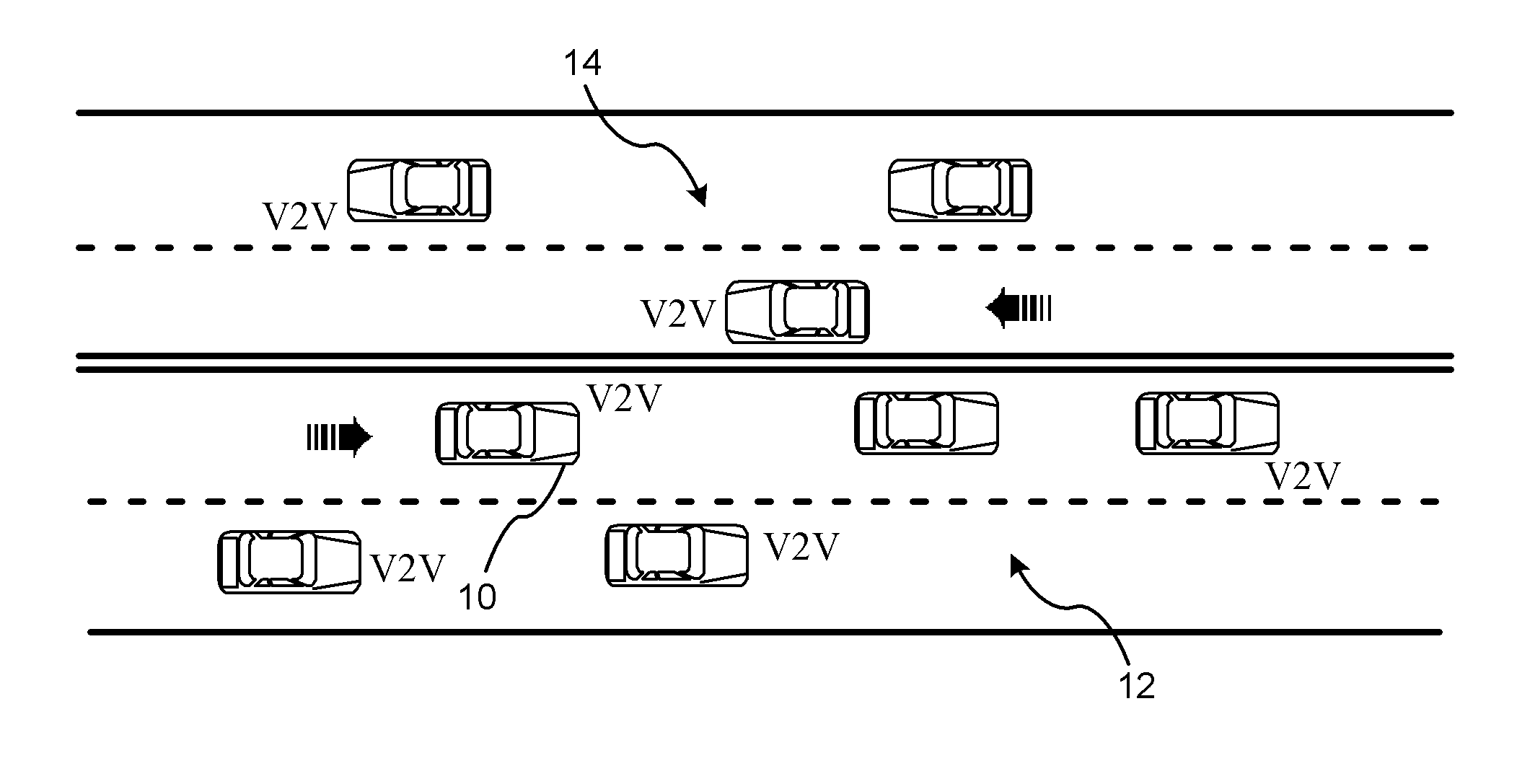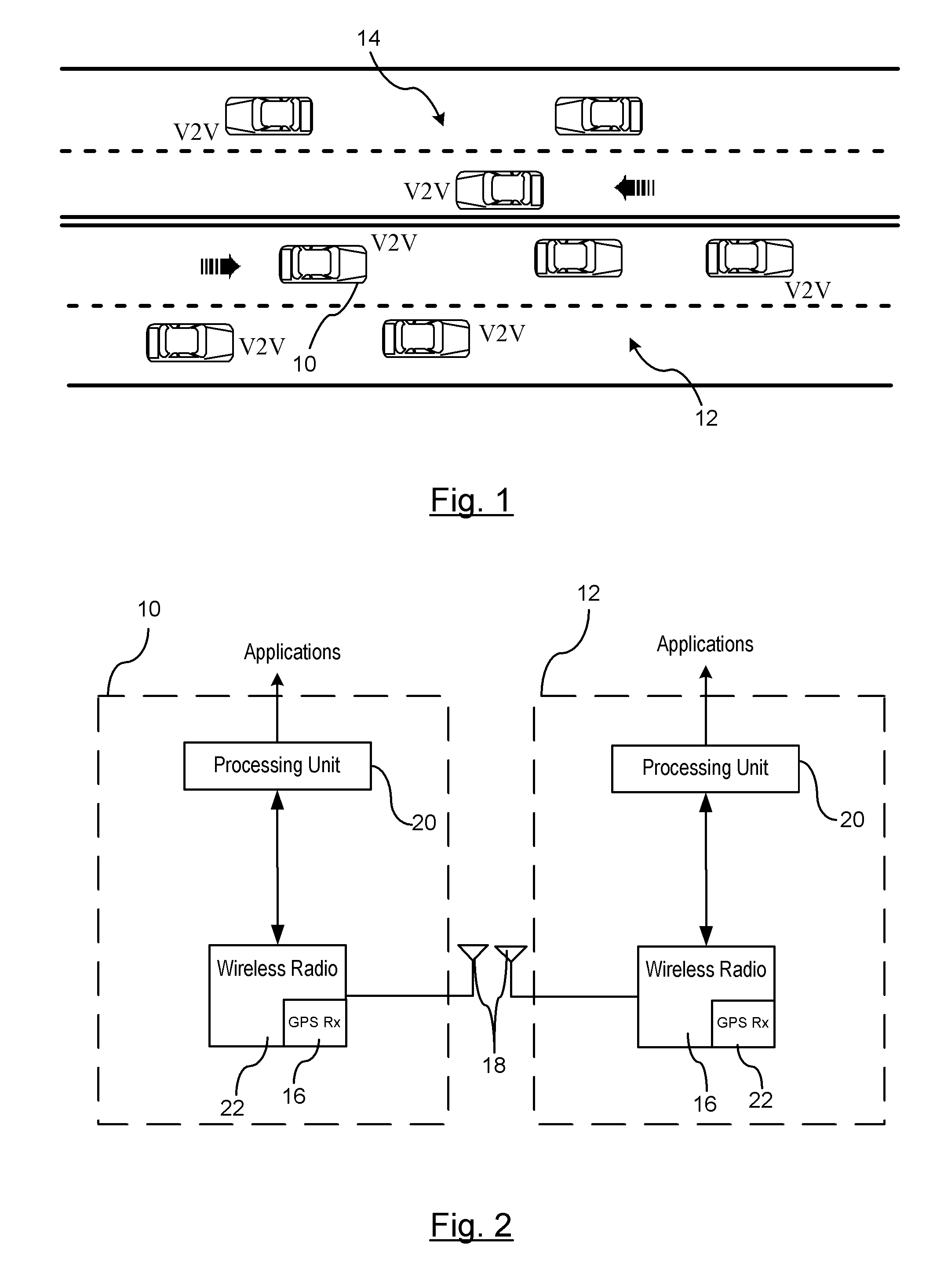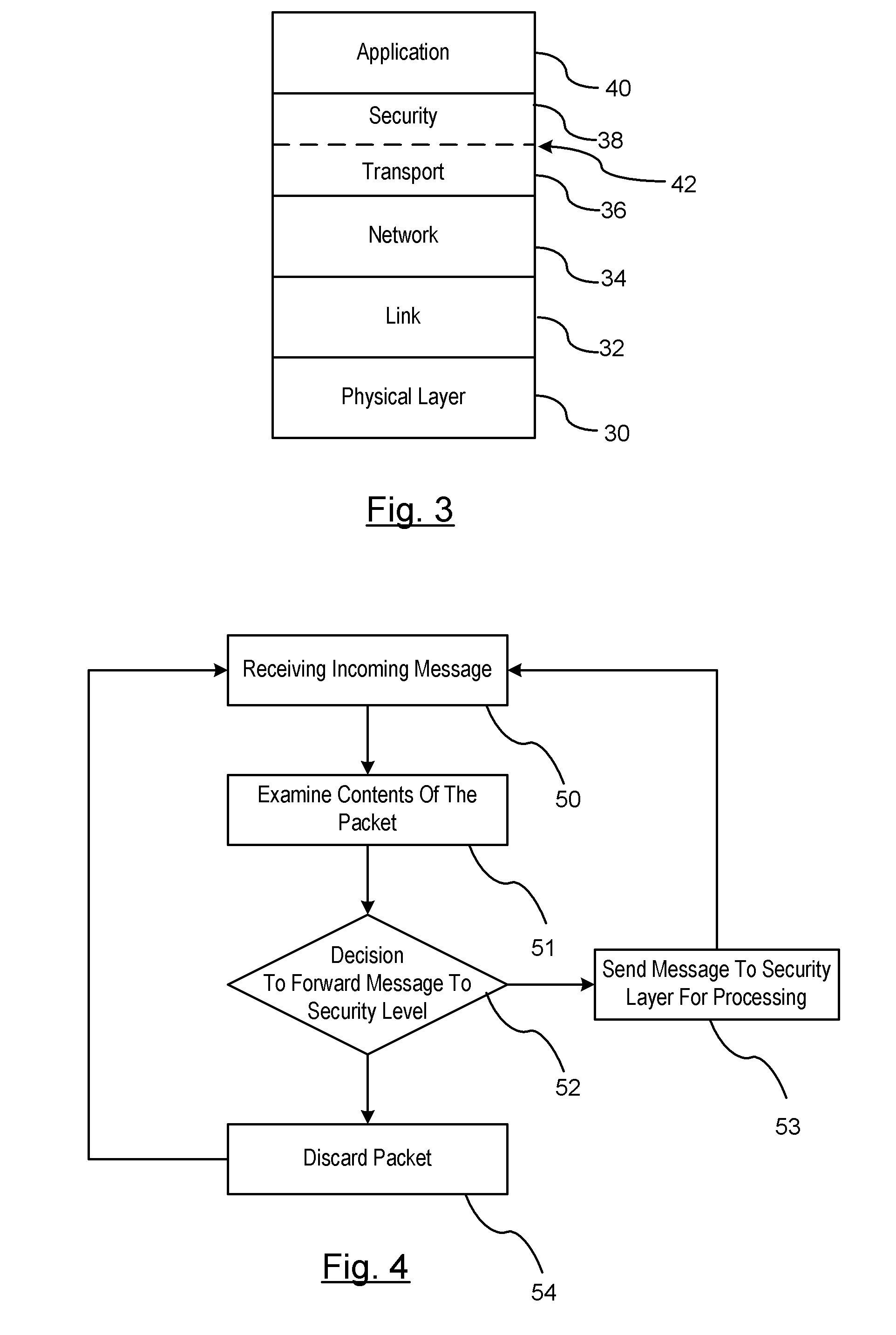Reducing the computational load on processors by selectively discarding data in vehicular networks
a technology of vehicular communication and processors, applied in the field of vehicular communication, can solve the problems of large computational burden of processors, inability to integrate security protection in v2v applications, and inability to efficiently process messages
- Summary
- Abstract
- Description
- Claims
- Application Information
AI Technical Summary
Benefits of technology
Problems solved by technology
Method used
Image
Examples
Embodiment Construction
[0015]There is shown generally in FIG. 1 a traffic flow diagram illustrating a host vehicle 10 and a plurality of remote vehicles 12 traveling in a same direction. A plurality of oncoming remote vehicles 14 travel along an opposite side of the road in an opposing direction. Many of the vehicles traveling in the same direction and the opposing direction have communication capabilities with the host vehicle 10 known as vehicle-to-vehicle (V2V) messaging. The host vehicle 10 and those respective remote vehicles 12 that have communication capabilities periodically broadcast wireless messages to one another over a respective inter-vehicle communication network.
[0016]V2V wireless messages communicated between the vehicles may be transmitted as a standard periodic beacon message that includes data regarding environmental awareness conditions relating to vehicle positions, vehicle kinematics / dynamic parameters, traffic or road events sensed by each respective vehicle. Such environmental awa...
PUM
 Login to View More
Login to View More Abstract
Description
Claims
Application Information
 Login to View More
Login to View More - R&D
- Intellectual Property
- Life Sciences
- Materials
- Tech Scout
- Unparalleled Data Quality
- Higher Quality Content
- 60% Fewer Hallucinations
Browse by: Latest US Patents, China's latest patents, Technical Efficacy Thesaurus, Application Domain, Technology Topic, Popular Technical Reports.
© 2025 PatSnap. All rights reserved.Legal|Privacy policy|Modern Slavery Act Transparency Statement|Sitemap|About US| Contact US: help@patsnap.com



